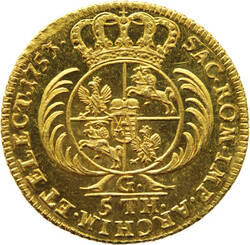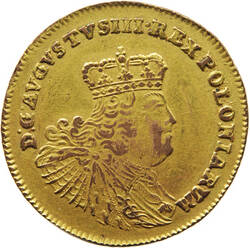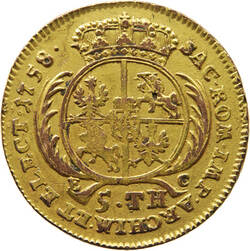No coins escape the forgers. People have been illicitly copying the coinage and disseminating forgeries to the detriment of the state for almost as long as coins have existed. Since ancient times, this type of crime has attracted harsh penalties.
There were two ways of producing fake coins. One was to strike coins with a reduced proportion of precious metal. The other was to take a base metal core and cover it in precious metal. In both cases, the coin was regarded as debased.
King Frederick the Second of Prussia indulged in forgery on a large scale during the Seven Years' War. He put debased silver coins into circulation as a way of foisting the cost of the war on to the population. In Saxony, he went down the same route while the country was under Prussian occupation. He'd leased the Leipzig Mint to his court factor, Veitel Ephraim, who struck two types of coins: the "drittelthaler", worth a third of a thaler, and the tympf, a silver coin to the value of 18 groats in circulation in Poland. But they were so debased that people commonly ridiculed them as Ephraimites. Before long, the market refused to accept these coins.
Nor did the five thaler gold coin of King August the Third of Poland remain unscathed. You can see the result of the forgery on display here. Prussia issued the coin as the "new August d'or". But you only have to look at the colour, a bright reddish brown, to recognise it as fake. It's a sure sign that the fineness of the metal was drastically reduced.
Further Media
- Location & Dating
- 1753
- Material & Technique
- gold, embossed
- Dimenions
- Diameter: 23,3 mm; weight: 6,618 g
- Museum
- Münzkabinett
- Inventory number
- AGA1944


